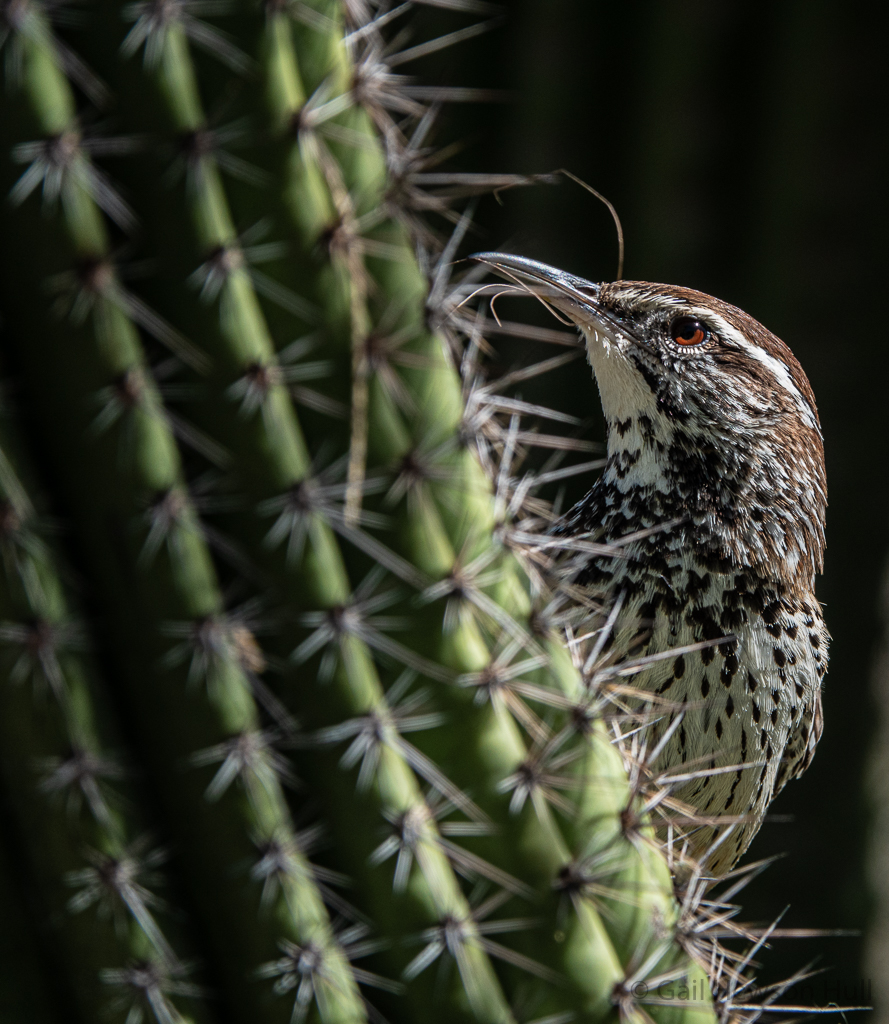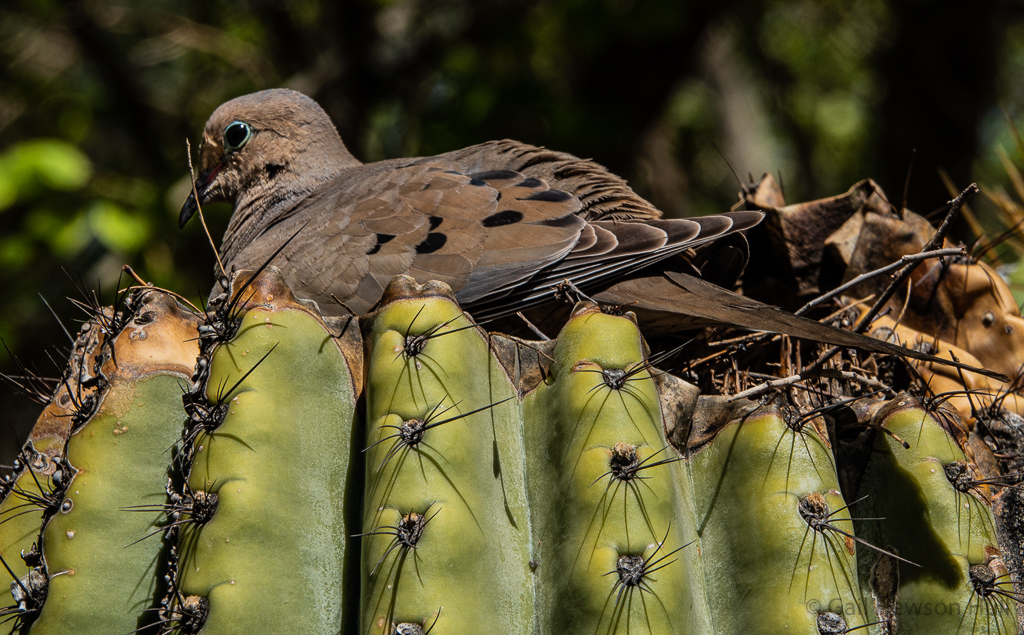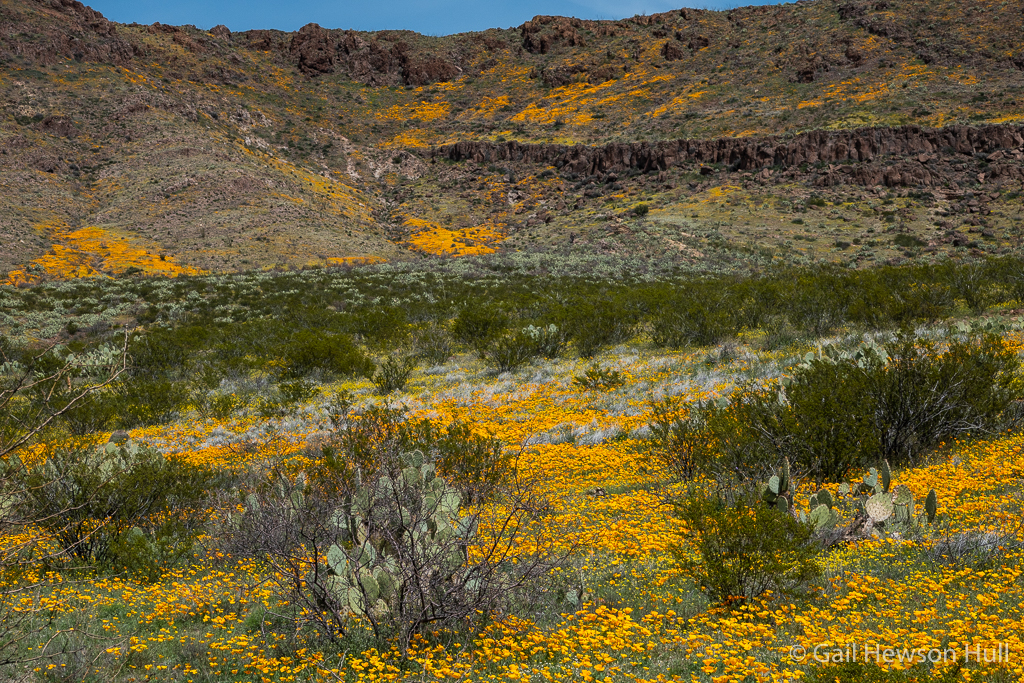DESERT BIRDS OF ARIZONA

Chihuahuan Raven, Petrified Forest National Park, AZ

Chihuahuan Raven. Note rictal (nasal) bristles. Range: Sw. U.S. to central Mexico
For someone who has passed much of the last three decades in the humid, rainy tropics of Costa Rica, I have adapted quickly over the past year to New Mexico, where average annual rainfall is only 13.85 inches as opposed to 180 inches in San Vito. Wherever I have lived in my life, I have learned the joy of participating in the natural world, rather than treating it simply as an object of scrutiny. Gardening in desert sand became a passion last spring and summer, and among the perennials I put into the ground were six small cacti, all of which survived the winter.
In mid-March, before the need for complete self-quarantining due to Covid-19 became clear to this part of the country, my husband Harry and I went forward with a long-planned short trip to Arizona. Over seven days in what is early spring here, we drove on scenic highways and visited national parks, monuments and forests, all the while practicing social distancing and mostly eating our own food. In Phoenix, we visited the Desert Botanical Garden, and in Tucson, we returned to the Arizona-Sonora Desert Museum, which we had enjoyed seventeen years ago when it was a less developed natural history attraction. We looked forward to observing spring in the desert, and I planned my target list of bird species to see and, with luck, to photograph: the Elegant Trogon, the Elf Owl, and, just one, please, any Bunting. HA! There is an old expression, “Men plan, God laughs”. I’ll change that to “Women plan, the universe yawns”.
My affinity for lush tropical forests will be with me for life, but I find the desert plants to be extremely attractive and fascinating in their own right. I saw that cacti such as Cholla, Saguaro or Prickly pear dominate the landscapes in many areas we passed. Barrel cactus are not so common, but they command attention. Technically, only about half of Arizona is desert, but some research tells me that state has 83 species of cacti, second to Texas’ high count in the U.S. of 91 species; but still, coming in second in cacti is impressive. New Mexico, by comparison, boasts 56 species.

Spring in the Arizona Sonora Desert with Cholla, Prickly Pear and Saguaro cacti visible
I saw many birds using cacti for nests. A male Cactus Wren did a spectacular mating dance atop a Saguaro. Birds, bats and insects use former peck holes in Saguaro cacti for lodgings. Woodpeckers drill and peck the original nesting cavities in the stems and trunks; then after nesting, they abandon these cavities. Owls, European Starlings, insect-eating bats, mice or insects often take possession. In species of the cactus genus Cholla birds were coming and going, hoisting nesting material, or were already established in well protected nests. I saw starlings and doves nesting on the top of cacti or using small crevices and hollows between branches/arms. They don’t seem to know about Prairie Falcons!

Gila Woodpecker starting a nest cavity on Saguaro cactus, Phoenix Desert Botanical Garden
When we returned home March 17, it was time to nest and quarantine ourselves. The current news of suffering and death is shocking and frightening, and I hope the birds, cacti and landscapes you see here will provide you with a pleasing respite from grim reality.

Gila Woodpecker cavity nest on Saguaro Cactus, Phoenix Desert Botanical Garden. Resident sw U.S. to central Mexico

Cactus Wren with nesting material on Cholla Cactus, Phoenix Desert Botanical Garden

Male Cactus Wren in full mating display, Phoenix Desert Botanical Garden. Sw. U.S. to cen. Mexico

Cactus Wren emerging from nest in Cholla Cactus, Arizona-Sonora Desert Museum

Curve-billed Thrasher nesting in Cholla Cactus. Range sw U.S. to s Mexico

European Starling and chick on top of Saguaro Cactus, Phoenix Desert Botanical Garden

White-winged Dove nesting on Saguaro Cactus, Phoenix Desert Botanical Garden. Range sw U.S. to n Chile

Barrel Cactus, Arizona-Sonora Desert Museum

Inca Dove, Riparian Preserve at Water Ranch, Gilbert, AZ (just southeast of Phoenix). Range sw U.S. to nw Costa Rica

Gambel’s Quail, Phoenix Desert Botanical Garden. Resident sw U.S. to nw Mexico

Saguaro Cactus habitat, Phoenix Desert Botanical Garden

Female Great-tailed Grackle. Ranges from Sw. U.S. to Peru

Prickly Pear Cactus habitat amidst California Poppies, March 16, 2020 on Highway 191 near Buena Vista, AZ
Share this:
- March 26, 2020
- fauna, flora, landscape
- Comments closed


